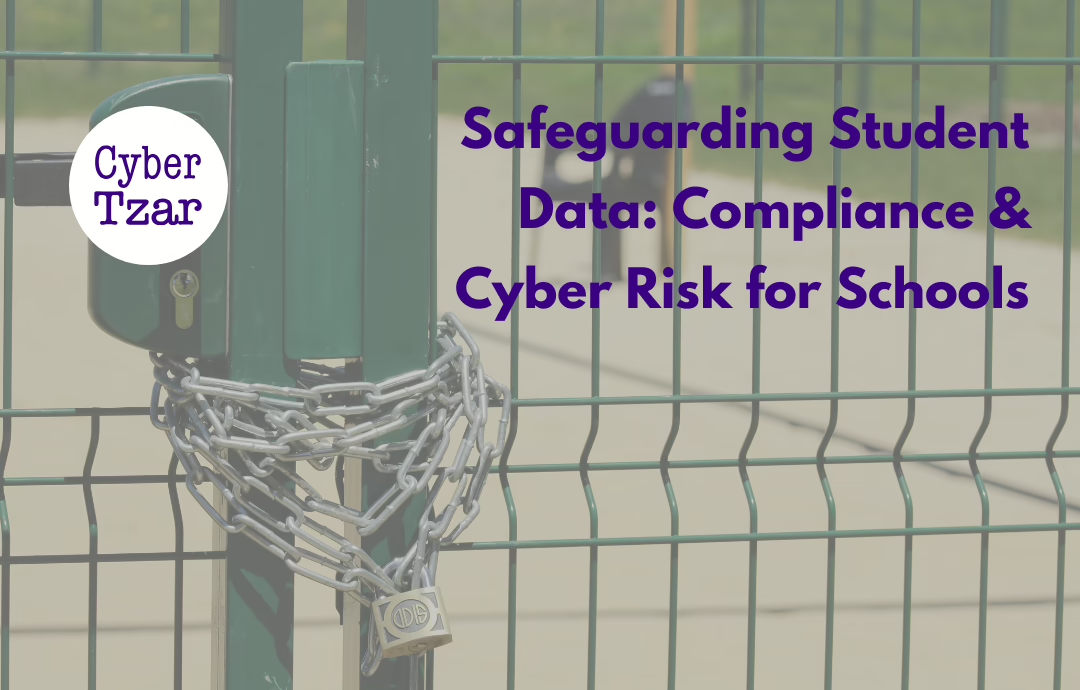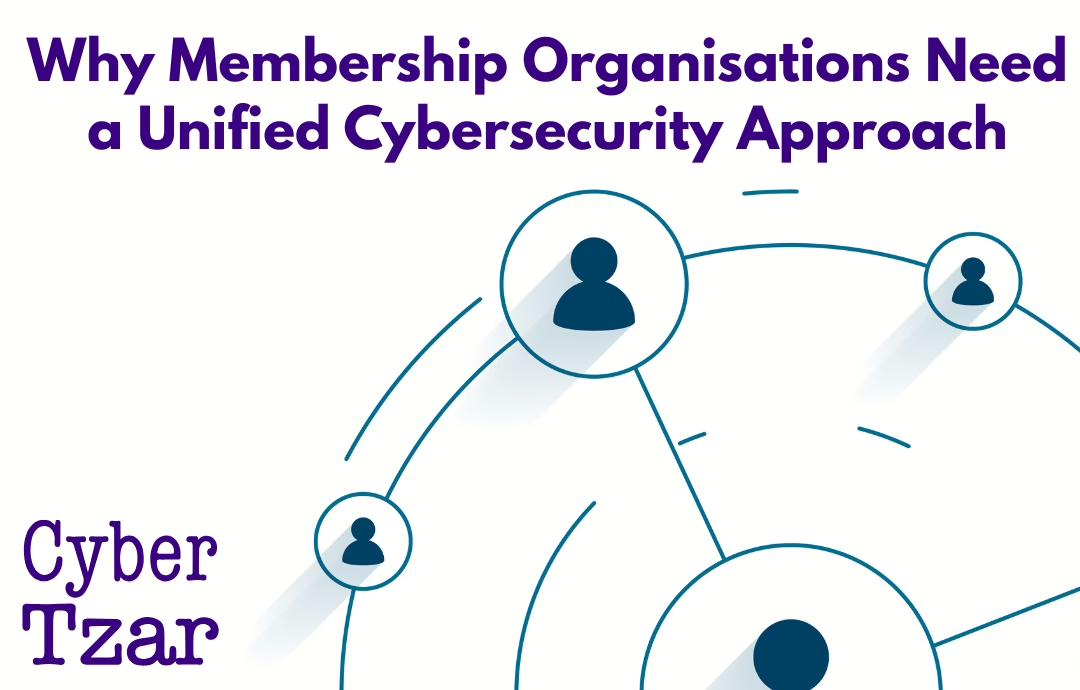Introduction
Schools collect and manage vast amounts of sensitive student data, including personal details, medical records, academic performance, and behavioural reports. With increasing digitalisation in education, this data is often stored on cloud platforms, learning management systems, and third-party applications—making it a prime target for cybercriminals.
From ransomware attacks to data breaches, the risks to student information are growing. Schools must ensure they are not only compliant with data protection regulations like the UK GDPR but also actively managing cyber risks to safeguard student privacy.
This article explores the key cyber risks facing schools, outlines compliance obligations, and provides best practices for protecting student data in 2024 and beyond.
1️⃣ Why Schools Must Prioritise Data Protection
📌 1 in 3 UK schools experienced a cyber attack in the past year.
📌 Ransomware attacks on education increased by 44% in 2023, with schools often unable to recover their data.
📌 The Information Commissioner’s Office (ICO) has issued fines to schools for data breaches—poor security can lead to legal consequences.
💡 Schools must go beyond compliance and adopt a proactive approach to protecting student data.
2️⃣ The Biggest Cyber Risks Facing Schools
🔹 1. Ransomware & Data Breaches
Many schools lack advanced security measures, making them easy targets for ransomware gangs who encrypt student records and demand payment.
Common Risks:
- Unsecured servers storing student data.
- Phishing emails tricking staff into clicking malicious links.
- Lack of backup strategies, leaving schools unable to recover from cyber attacks.
🛡️ How to Reduce Risk:
✔ Backup student data regularly and store copies offline.
✔ Train staff to recognise phishing emails, as most ransomware starts via email.
✔ Use endpoint protection and network monitoring tools to detect unusual activity.
🔹 2. Unsecured Learning Platforms & Third-Party Apps
Schools rely on EdTech platforms, virtual learning environments, and cloud services—but not all providers follow strong cybersecurity practices.
Common Risks:
- EdTech apps collecting unnecessary student data without proper security controls.
- Weak passwords and shared accounts making student information accessible to unauthorised users.
- Poorly configured cloud storage exposing data to the public.
🛡️ How to Reduce Risk:
✔ Vet third-party software providers before integrating them into school systems.
✔ Use strong authentication measures, such as Multi-Factor Authentication (MFA).
✔ Limit the amount of student data shared with external services.
🔹 3. Insider Threats & Human Error
Teachers, administrators, and even students can accidentally expose or mishandle data, leading to breaches.
Common Risks:
- Sending student records via unsecured email.
- Accidentally sharing sensitive data with unauthorised recipients.
- Leaving school devices unlocked or unattended.
🛡️ How to Reduce Risk:
✔ Train all staff on data protection and cybersecurity awareness.
✔ Restrict access to sensitive information based on job role.
✔ Use encryption for emails and files containing personal data.
🔹 4. Weak Passwords & Unprotected Accounts
Many schools still allow weak passwords or fail to enforce secure login policies.
Common Risks:
- Staff and students reusing passwords across multiple platforms.
- Hackers exploiting weak passwords to access school databases.
- No centralised password management, leading to inconsistent security.
🛡️ How to Reduce Risk:
✔ Enforce strong password policies with minimum complexity requirements.
✔ Use Multi-Factor Authentication (MFA) for all staff and administrative accounts.
✔ Implement a password manager to encourage secure password storage.
3️⃣ Compliance Obligations for Schools (UK GDPR & ICO Guidelines)
Schools must comply with the UK General Data Protection Regulation (UK GDPR) to ensure student data is handled securely and lawfully.
📌 Key Compliance Requirements:
✔ Data Minimisation – Schools should only collect and store the data they actually need.
✔ Lawful Processing – Schools must have a valid reason for processing student data (e.g., legal obligation, public interest, or consent).
✔ Data Protection Impact Assessments (DPIAs) – Required for new technologies or data processing activities that could pose risks.
✔ Parental & Student Rights – Students (or their parents) have the right to request access to their data and request corrections or deletion.
✔ Reporting Data Breaches – Schools must report serious data breaches to the ICO within 72 hours.
💡 Failing to comply with UK GDPR can result in fines, reputational damage, and legal action.
4️⃣ Best Practices for Schools to Protect Student Data
✅ 1. Appoint a Data Protection Officer (DPO)
- A DPO oversees data security policies, staff training, and regulatory compliance.
- Required for larger schools and multi-academy trusts (MATs).
✅ 2. Secure All School Devices & Networks
- Ensure firewalls, antivirus software, and encryption are in place.
- Restrict WiFi access and separate staff, student, and guest networks.
- Monitor network activity for signs of cyber attacks.
✅ 3. Regularly Review & Update Security Policies
- Conduct annual cybersecurity risk assessments.
- Update acceptable use policies for staff and students.
- Ensure third-party vendors meet security requirements before using their services.
✅ 4. Improve Cyber Awareness Among Staff & Students
- Run cybersecurity training sessions for teachers and administrative staff.
- Educate students on password security and online safety.
- Encourage a culture of cybersecurity responsibility within the school.
✅ 5. Implement an Incident Response Plan
- Develop a step-by-step process for handling data breaches.
- Assign specific roles to manage incident response and communication.
- Test the plan regularly through tabletop exercises.
💡 A proactive approach to cybersecurity will help schools minimise risk, protect student data, and avoid costly breaches.
Final Thoughts: Schools Must Take Cybersecurity Seriously
With cyber threats on the rise, schools must go beyond basic compliance and take a proactive approach to securing student data. Ransomware attacks, phishing scams, and data breaches are all preventable with strong policies, staff training, and secure technology practices.
🔹 Key Takeaways for Schools:
✔ Student data is a valuable target—schools must prioritise security.
✔ Cyber risks include ransomware, phishing, insider threats, and weak third-party security.
✔ UK GDPR compliance is mandatory—schools must protect personal data.
✔ Regular training, strong access controls, and secure infrastructure can prevent breaches.
By implementing these best practices, schools can ensure compliance, protect student privacy, and maintain trust with parents, students, and regulators.
📢 What’s Next?
💡 Next in the series: “Lessons from Recent Supply Chain Attacks: What Businesses Can Learn” (w/c 14 May).
Would you like a school cybersecurity audit or data protection review? Get in touch today. 🚀


